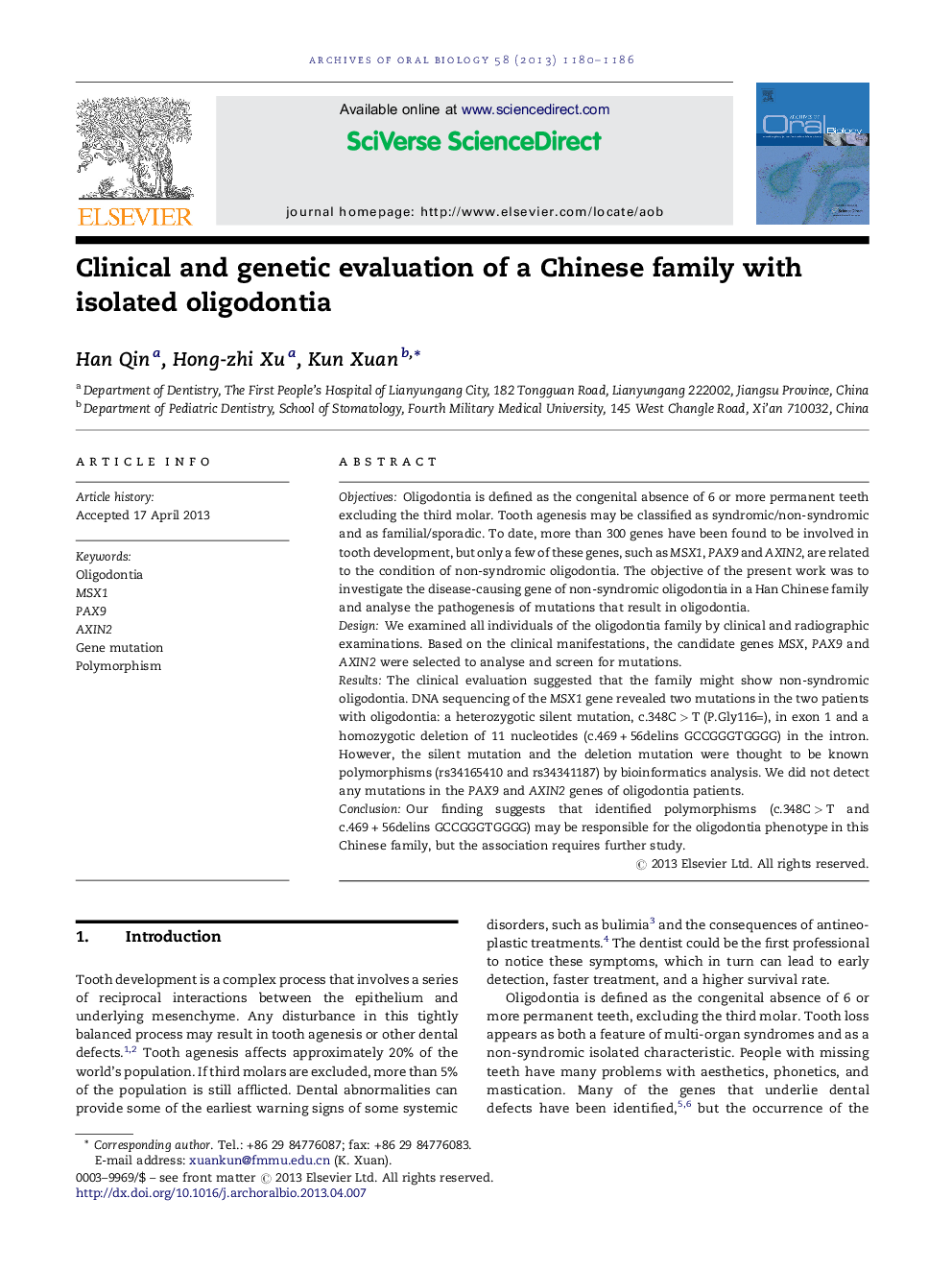| کد مقاله | کد نشریه | سال انتشار | مقاله انگلیسی | نسخه تمام متن |
|---|---|---|---|---|
| 6051420 | 1583320 | 2013 | 7 صفحه PDF | دانلود رایگان |
ObjectivesOligodontia is defined as the congenital absence of 6 or more permanent teeth excluding the third molar. Tooth agenesis may be classified as syndromic/non-syndromic and as familial/sporadic. To date, more than 300 genes have been found to be involved in tooth development, but only a few of these genes, such as MSX1, PAX9 and AXIN2, are related to the condition of non-syndromic oligodontia. The objective of the present work was to investigate the disease-causing gene of non-syndromic oligodontia in a Han Chinese family and analyse the pathogenesis of mutations that result in oligodontia.DesignWe examined all individuals of the oligodontia family by clinical and radiographic examinations. Based on the clinical manifestations, the candidate genes MSX, PAX9 and AXIN2 were selected to analyse and screen for mutations.ResultsThe clinical evaluation suggested that the family might show non-syndromic oligodontia. DNA sequencing of the MSX1 gene revealed two mutations in the two patients with oligodontia: a heterozygotic silent mutation, c.348CÂ >Â T (P.Gly116=), in exon 1 and a homozygotic deletion of 11 nucleotides (c.469Â +Â 56delins GCCGGGTGGGG) in the intron. However, the silent mutation and the deletion mutation were thought to be known polymorphisms (rs34165410 and rs34341187) by bioinformatics analysis. We did not detect any mutations in the PAX9 and AXIN2 genes of oligodontia patients.ConclusionOur finding suggests that identified polymorphisms (c.348CÂ >Â T and c.469Â +Â 56delins GCCGGGTGGGG) may be responsible for the oligodontia phenotype in this Chinese family, but the association requires further study.
Journal: Archives of Oral Biology - Volume 58, Issue 9, September 2013, Pages 1180-1186
